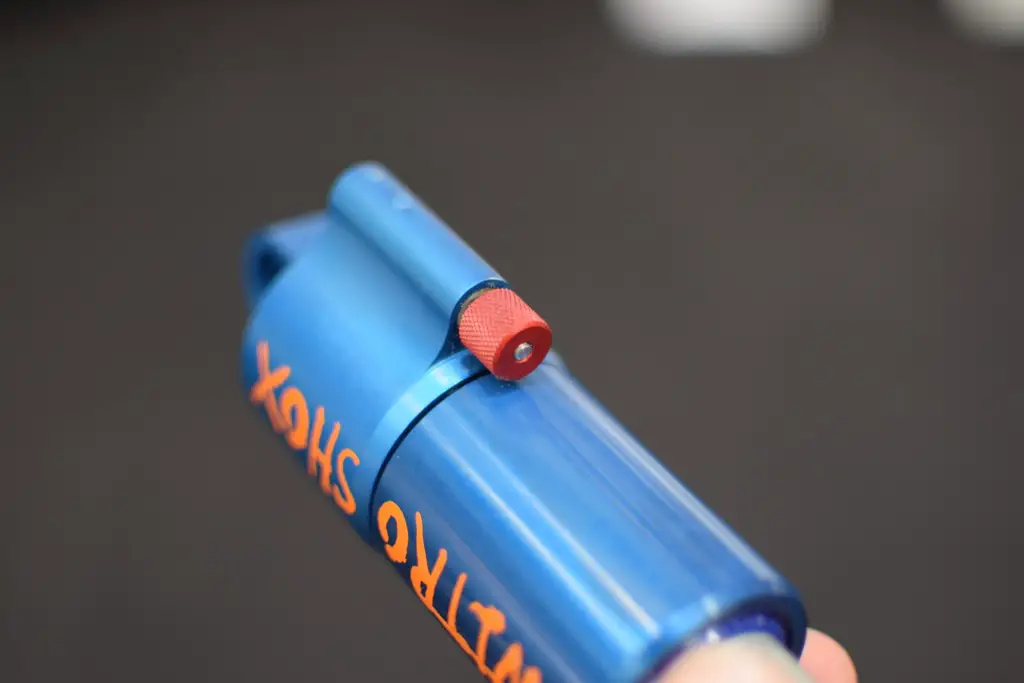On the last day of Eurobike, I sat down for a chat with Kevin Hill and Joe Hunter to chat about their new Brew Nitro Shox. Although it doesn’t look anything special (it’s home-made, and presently unique), it’s based on oleo strut technology, which is used in the landing struts of aircraft.

Here’s how a typical oleo strut shock works: essentially, in the shaft of the shock there’s a gas which compresses, and a liquid (the oil) which does not. They are separated by a piston. The gas acts as your spring (it can’t be air, apparently – the test one uses nitrogen). Compressing the shock moves the separator piston,and forces the oil through a hole in the end of the shaft called the metering orifice. The flow of oil is controlled by a metering pin in the body of the shock, which pushes through the metering orifice and regulates the flow of the oil.
This produces a non-linear damping circuit – but because this also has an effect on the compression of the gas (the spring, remember) it also affects the spring rate, which is also non linear. It works essentially as an ‘intelligent’ shock, which is apparently capable of reading the terrain and the rider’s style much more effectively than any other shock on the market, and gives them much more control.
Joe’s shock differs from a typical oleo unit in a couple of respects, concerning the ability to adjust spring rate or provide more control over damping (both of these are sufficiently new that patents have been applied for).
The shock we saw is a prototype model – the one knurled knob controls both compression and rebound damping, although as the shock is ‘intelligent’ it doesn’t need that much adjustment. There are plans for a model with separate adjustments, however (here’s a mockup):

The other potential issue is that the shock has to come with the charge set at the factory. The idea as I understand it at present is to offer three settings – soft, medium or hard – and any nuance will be taken care of by the shock itself. Another option though is to offer a ‘piggyback’ like this mockup. The red piggyback would screw in and out, and would therefore alter the volume of the gas – and hence its pressure, and thus the spring rate.

The whole idea is certainly intriguing, and we can’t wait to see where Kevin and Joe take this next.







has anyone got a cross sectional diagram of this thing, because I still cant work out how it differs from a “normal” shock and that’s after reading a couple of pieces about it?
Not of the thing itself, no (there are patents involved, and understandably they don’t want the press to get hold of the internals). There are explanations of oleo struts online of course. But from a cursory glance, not many good ones.
Similar to how Ohlins construct certain motorcycle shocks then.
kind of get it now.
https://www.oleo.co.uk/skin/oleo/images/hydraulic-english.png
http://www.srl.gatech.edu/education/ME6105/Projects/Fa13/Design%20of%20an%20Oleo%20Strut%20Landing%20gear/strut
If it’s had a patent application then it’s been published…
And here it is.
Well, that didn’t work so well with the linking!
Fixed it for you, funkynick 🙂
And here’s the other one, FWIW